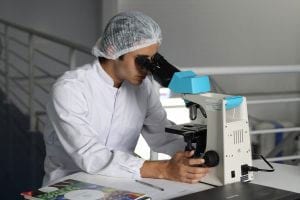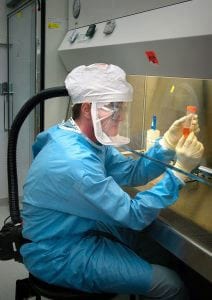26.2 miles. 5 boroughs. And a deep feeling of fulfillment when she finally crossed the finish line. When Holly Griffin first decided to run the New York Marathon, she was committed to proving to herself what she could do. But it soon became a fantastic avenue to also raise awareness and support for neurofibromatosis.
According to reporting from Maggie Newland of CBS News, Griffin chose to run the marathon, in part, to show her son Hunter that their shared genetic disorder—which causes mostly benign tumors to grow on their nerves—doesn’t stop or limit them.
She explains that her tumors and Hunter’s tumors differ in impact. Griffin manages pain from the tumors, while Hunter experienced difficulty walking and weak bones in his leg. Eventually, Hunter had his leg amputated at ten years old. Three years later, Hunter has found freedom and autonomy—and a sincere love of basketball. To Griffin, there’s nothing more amazing than watching Hunter join every basketball team he can. He’s got skills!
Through running the marathon, Griffin started the conversation on neurofibromatosis. Also importantly, her run helped fundraise for the Children’s Tumor Foundation. Medical research is indelibly crucial, so having that financial support helps to progress research into treatments and potential cures.
The Key Facts about Neurofibromatosis
As described above, neurofibromatosis is a rare genetic disorder that affects the nervous system and causes tumors to develop on healthy nerve tissue. Most tumors are benign, but some can be malignant (cancerous). There are three known forms of neurofibromatosis: type 1 (caused by NF1 mutations), type 2 (caused by NF2 mutations), and schwannomatosis (caused by SMARCB1 or NF2 mutations). The latter is the rarest form.
Symptoms of neurofibromatosis differ based on subtype. In NF1, which often begins in childhood with symptoms at birth, people may experience tiny bumps on the irises of the eyes, neurofibromas (soft bumps on/under the skin), bone deformities, macrocephaly, short stature, learning disabilities, and flat, light-brown spots on the skin (cafe au lait spots). Next, in NF2, symptoms often manifest in teenage years and may include tinnitus, balance issues, hearing loss, and headaches. Finally, schwannomatosis often causes skull, spinal, and peripheral nerve tumors, numbness and weakness, loss of muscle tone, and severe pain.
Learn more about neurofibromatosis and the efforts to “End NF through Research” by the Children’s Tumor Foundation.







